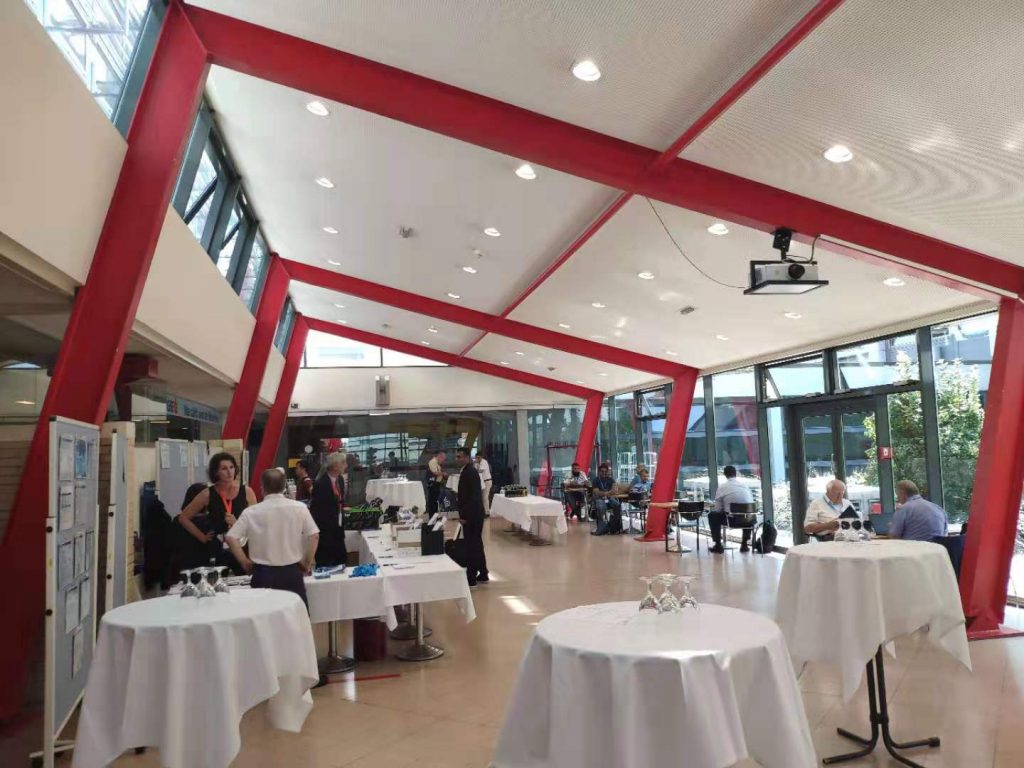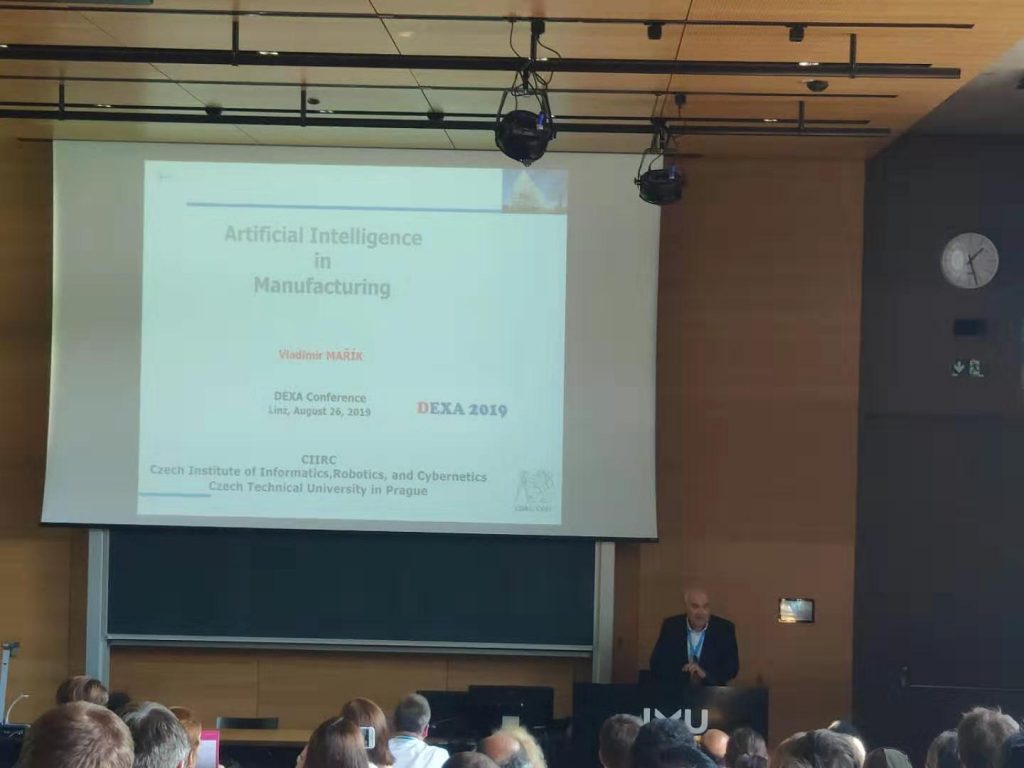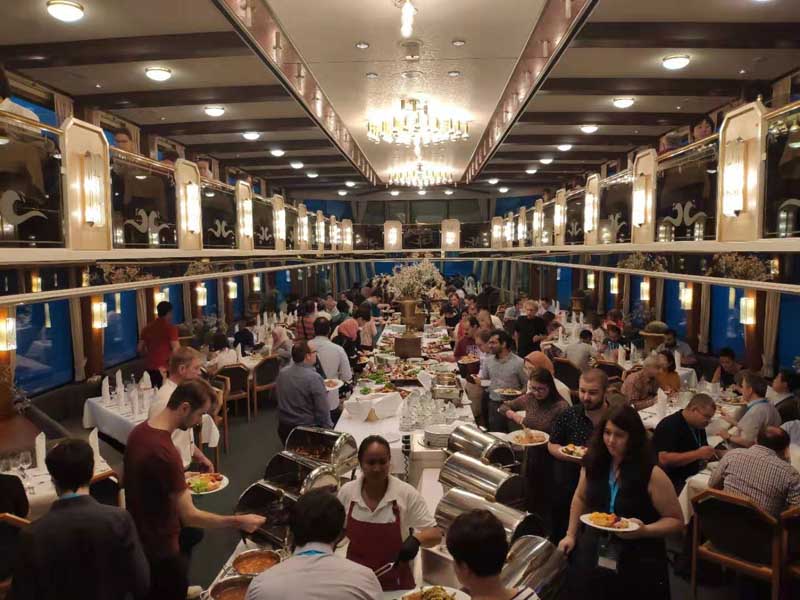This week, I am attending the DAWAK 2019 and DEXA 2019 conferences in Linz, Austria from the 26th to the 29th August 2019. In this blog post, I will provide a report about these conferences.

About the DAWAK and DEXA conferences
DAWAK ( Intern. Conf. on Data Warehousing and Knowledge Discovery ) and DEXA ( International Conference on Database and Expert Systems Applications ) are well-established conferences related to data mining and database systems. This year, it is the 30th edition of DEXA, and the 21st edition of DAWAK. These conferences are co-located and held in Europe.
It is not the first time that I attend these conferences. You can also see my reports about DAWAK 2018 and DEXA 2018, and about DAWAK 2016 and DEXA 2016.
Proceedings
The proceedings of DEXA and DAWAK are published by Springer in the LNCS (Lecture Notes in Computer Science) series, which ensures that it is indexed in all major databases (EI).

DEXA 2019 received 157 submissions, and 32 were accepted as full papers (acceptance rate of 20%) and 34 as special research papers.
DAWAK 2019 received 61 submissions, and 22 were accepted as full papers (acceptance rate of 36%).
Location
The conferences were held at the Johannes Kepler University of Linz, Austria. The city of Linz has some old buildings and streets, some hill, and the Danube river passes through the city. Holding the conferences in a university is fine. However, the drawback is that the campus of the university is located about 5 km from the city center.

Registration
On the first day, I registered for the conference, and everything went smoothly. The registration started at 12:00 AM, which gave plenty of time for arriving at the conference. Some drinks were served but there was no lunch. The conference bag contains the program, proceedings on USB as well as a few papers and tickets for lunch and other activities.


Keynote by Vldimir Marik “AI in manufacturing”
The first keynote was by Prof V. Marik from Czech Technical University. He talked about how AI can be used in manufacturing. He mentioned that there is a lot of expectations about AI in recent years, and AI has the potential to improve production efficiency and develop new business models. He talked about Industry 4.0, and concepts such as augmented reality, internet of things and services, multi-agent systems, and using robots in production facilities.

Welcome reception
On the first day, there was a welcome reception at the university where the conference was held.

Keynote by Axel Polleres about the semantic web and linked data
There was a keynote by A. Polleres about the Semantic Web. It first talked about how the concept of Semantic web has evolved from the idea of Tim Berners Lee in early 2000. Initially, the main idea was to use description logics to annotate Web content with ontologies to perform reasoning about the Web content. Some of the key results from 2000-2009 was that researchers have found which logics are decidable and scalable. A question was also how much reasoning do we really need for the web? and how can one publish knowledge on the Web? To publish data on the Web, it was proposed to use technologies such as URI and RDF to create what is called (open) linked data.

The speaker also mentionned that some lessons learned is that the OWL standard is perhaps too complicated for users (which I agree), and RDFS is among the most used standard. Also in practice, ontologies may contain inconsistencies. The speaker then talked about a prototype semantic web search engine that was created, and how there is more and more open data published by organizations such as governments, and also now there is open data portals to find open data.
The speaker talked about the Knowledge Graph of Google and how we don’t know exactly how it works but it may be related to work on Semantic Web and linked data, and it is used for question answering and showing related data to queries. Then, there was more discussion, but I will not report everything about the talk.
Keynote talk by Dirk Draheim “Future Perspectives of Association Rule Mining Based on Partial Conditionalization“
There was a keynote talk about association rule mining by Prof. Dirk Draheim from Estonia. He first indicated that data can be often misleading, and we may draw wrong conclusions if we don’t have enough data or don’t look at all the data. He mentionned the Simpson Paradox and that if we have more data or more information about the context, we can better understand the data. For example, although the average salary in Seattle may be higher than the average salary in Boston, it does not mean that people in Seattle really earn more than those in Boston, because in Seattle more people may be working in the IT industry and have high salary, which increases the average, but at the same time people in other industries in Seattle may be earning less than in Boston.

Prof. Draheim then suggested that we need to use other interesting measures and also consider probability theory. We can reformulate the problem of association rule mining using that theory and see a transaction database as a probability space. He then explained his idea, which I will not report all the details here. I think it is an interesting idea to use more statistics in pattern mining, and it is not the first work that goes in such direction (e.g. work on self-sufficient itemsets by Webb et al. uses statistical testing in pattern mining).
Banquet
On the evening of the third day, the conference banquet was held on a boat on the Danube River.



This year, several papers about pattern mining
I was pleased to see that there was many papers on pattern mining (e.g. itemsets, sequential patterns, association rules) this year such as:
- Philippe Fournier-Viger, Jiaxuan Li, Jerry Chun-Wei Lin, Tin Truong-Chi: Discovering and Visualizing Efficient Patterns in Cost/Utility Sequences. 73-88
- Hoang-Son Pham, Gwendal Virlet, Dominique Lavenier, Alexandre Termier: Statistically Significant Discriminative Patterns Searching. 105-115
- Philippe Fournier-Viger, Chao Cheng, Zhi Cheng, Jerry Chun-Wei Lin, Nazha Selmaoui-Folcher: Finding Strongly Correlated Trends in Dynamic Attributed Graphs. 250-265
- T. Yashwanth Reddy, R. Uday Kiran, Masashi Toyoda, P. Krishna Reddy, Masaru Kitsuregawa: Discovering Partial Periodic High Utility Itemsets in Temporal Databases. 351-361
- Hieu Hanh Le, Tatsuhiro Yamada, Yuichi Honda, Masaaki Kayahara, Muneo Kushima, Kenji Araki, Haruo Yokota: Analyzing Sequence Pattern Variants in Sequential Pattern Mining and Its Application to Electronic Medical Record Systems. 393-408
- Joe Wing-Ho Lin, Raymond Chi-Wing Wong: Frequent Item Mining When Obtaining Support Is Costly. 37-56
- Parul Chaudhary, Anirban Mondal, Polepalli Krishna Reddy: An Efficient Premiumness and Utility-Based Itemset Placement Scheme for Retail Stores. DEXA (1) 2019: 287-303
- P. Revanth Rathan, P. Krishna Reddy, Anirban Mondal: Discovering Diverse Popular Paths Using Transactional Modeling and Pattern Mining. DEXA (1) 2019: 327-337
- Raj Bhatta, Christie Ezeife, Mahreen Nasir Butt Mining Sequential Pattern of Historical Purchases for E-Commerce Recommendation
Next year
The DAWAK 2020 and DEXA 2020 conferences will be held in Bratislava, Slovakia on September 14th to 17th 2020.
Conclusion
That is all for this blog post! Globally, it was an interesting conference. It is not so big, nor too small, but it is an established conference, and some excellent researchers are attending it. The quality of papers was good. I have attended DEXA and DAWAK a few times, and will be looking forward to the next one.
Update: You may also be interested to read my newer posts about DEXA and DAWAK 2021.
—
Philippe Fournier-Viger is a professor of Computer Science and also the founder of the open-source data mining software SPMF, offering more than 150 data mining algorithms.





Pingback: Brief report about the DEXA 2021 and DAWAK 2021 conferences | The Data Mining Blog